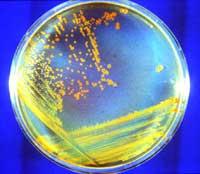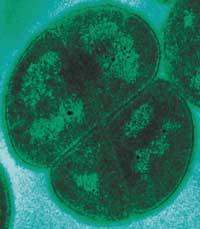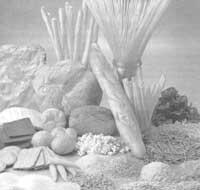Coping with irradiation
2002/02/15 Galarraga Aiestaran, Ana - Elhuyar Zientzia
Enterocolitic yersinia

Ionizing radiation breaks the stability of atoms and/or molecules in food. This alteration produces ions and free radicals that combine with each other or with other molecules. In this way other chemically stable molecules are formed. According to studies, these compounds have no harmful health effects and are the same that occur in cooking or food conservation.
The most widely used ionizing radiation in the food industry is gamma rays produced by the Co-60. They have a short wavelength, similar to ultraviolet light and microwaves, and having no capacity to extract neutrons, the products treated with them do not become radioactive. Gamma rays traverse the container and food without leaving a trace and just heat them
Moreover, these changes cause the destruction of pathogenic microorganisms and the prolongation of the duration of food by decreasing the speed of natural deterioration. In addition, chemical preservatives are avoided. However, there are also less beneficial changes. For example, the influence of free radicals on proteins and lipids makes foods taste special. In addition, meat darkens and fruits and vegetables tend to soften.
In some countries food irradiation is very limited, as consumers see it with suspicion. For example, in the Spanish state only allowed in species and aromatic herbs. In the US, the legislation also allows irradiation in fruits, vegetables, wheat, legs and since 2000, in chicken and fresh meat.
Deinococcus radiodurans
: indestructible microorganism

In the 1950s, a microorganism that was not destroyed by ionizing radiation was first discovered in a can of irradiated meat: Deinococcus radiodurans. Since then, researchers have tried to discover the secret of the sustainability of this microorganism. It is also capable of combating ultraviolet light, lethal chemicals and dehydration. Three years have passed since the sequencing of the Deinococcus radiodurans genome was achieved, but until recently they have not known what the strength of the microorganism is.
Researchers from Louisiana State University (USA) analyze the mutant line of Deinococcus radiodurans, weaker from radiation. To find the gene that resisted the microorganism, fragments of common DNA were introduced into the mutant's DNA. Thus it was observed that the difference between them was in a couple of bases of the DR0167 gene.
Radiation was applied to the common microorganism and mutant for an hour and a half to study the activity of this gene. It was then observed that 24 genes of the resistant microorganism were activated, while those of the mutant were activated much less.
According to researchers, these genes encode proteins that repair the damage caused by radiation. In this way, Deinococcus radiodurans could be used for cleaning waste from radioactive areas.

Gai honi buruzko eduki gehiago
Elhuyarrek garatutako teknologia






